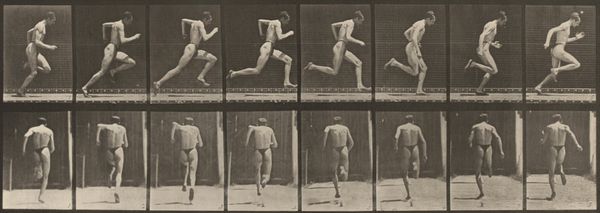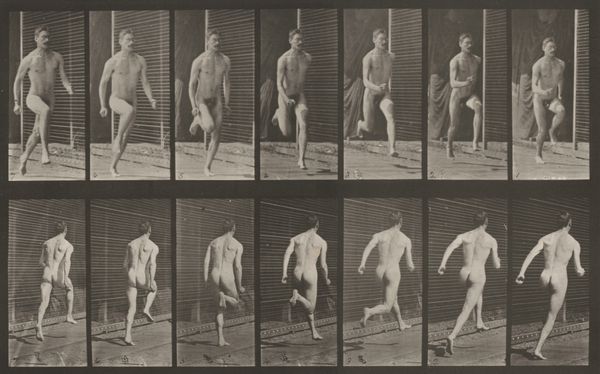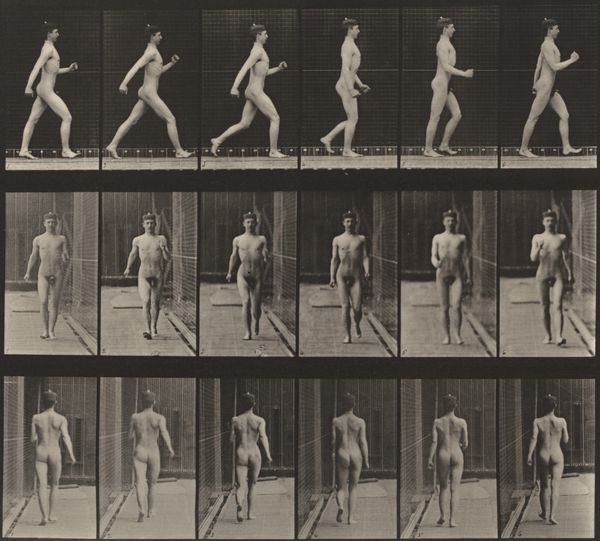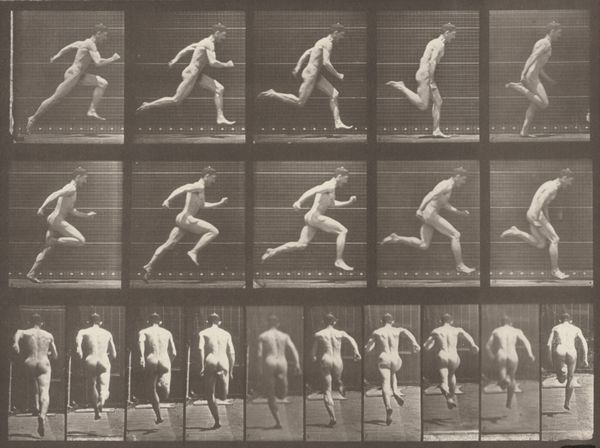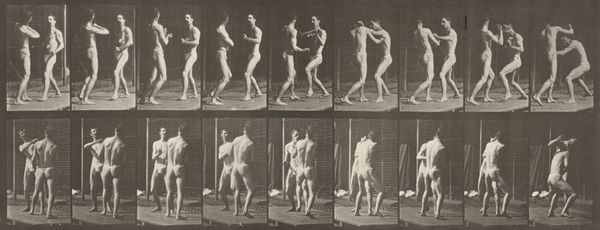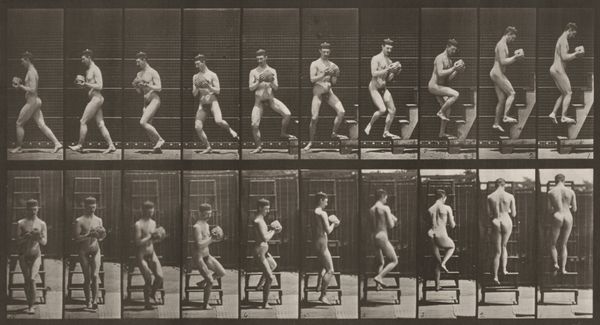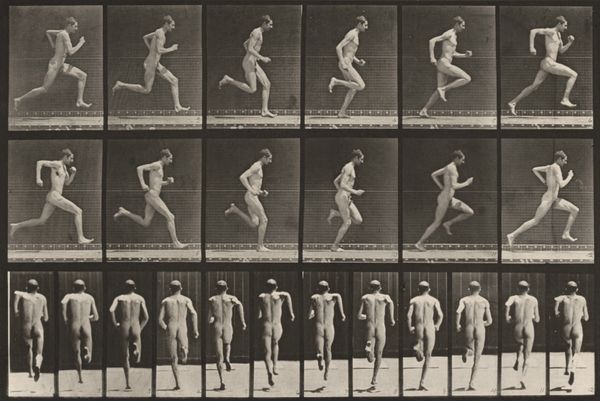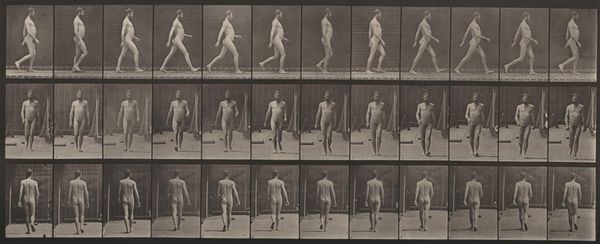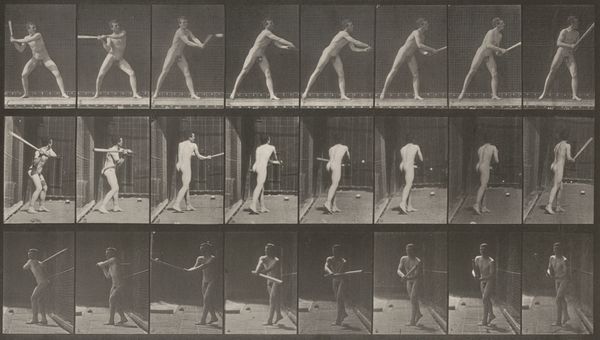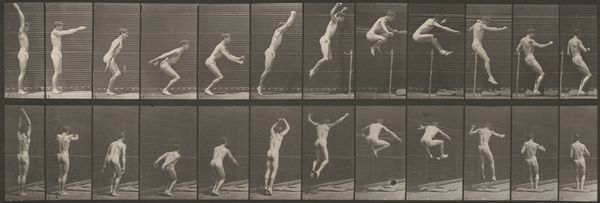
print, photography, gelatin-silver-print
#
portrait
# print
#
photography
#
gelatin-silver-print
#
genre-painting
#
history-painting
#
nude
#
realism
Dimensions: image: 16.4 × 43.9 cm (6 7/16 × 17 5/16 in.) sheet: 47.6 × 60.2 cm (18 3/4 × 23 11/16 in.)
Copyright: National Gallery of Art: CC0 1.0
Editor: Here we have Eadweard Muybridge's "Plate Number 65. Running at full speed" from 1887, a gelatin-silver print. It’s quite fascinating how he’s captured motion by breaking it down into these sequential images. I am curious: what symbolic layers might exist within what appears to be a straightforward scientific study? Curator: Indeed. Muybridge sought to dissect motion, but in doing so, he unwittingly unearthed deeper cultural currents. The very act of dissecting human movement calls to mind early scientific rationalism, but look closer. What does the nude figure signify in Western art history? Editor: Purity, perhaps? Classicism? Or vulnerability? It feels complicated in this setting. Curator: Exactly! And why “running at full speed?" Is he fleeing something? Pursuing something? This running man echoes classical sculptures, but removed from their mythological context, stripped bare both physically and symbolically. Doesn’t this raise questions about the modern obsession with speed and progress, stripping away cultural nuance in pursuit of pure functionality? Editor: That’s a compelling point! It transforms from a scientific study into a mirror reflecting our own cultural values and perhaps anxieties. He is like a ghost of classical sculptures, but emptied of context, only speed and exposure are left. Curator: Yes. The symbolism of a running man in this way really opens this work to so many readings. I find it interesting to ponder what it would mean today. Editor: I agree. Thanks, I definitely see this piece in a new way. It is far more nuanced than it appears on the surface.
Comments
No comments
Be the first to comment and join the conversation on the ultimate creative platform.
